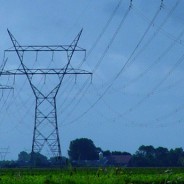Regulation does not equal zero risk
As I pointed out in my previous blog, dealing with commissions without the thought of long-term implications can come back to bite you. Regulation is not risk free. In fact, it could be argued that regulation risk is higher and harder to quantify than market risk. In the regulation world, you are making deals which are perceived to be set in stone. Whereas in the free market, no one believes in any deals being set in stone. This makes the free market companies more agile and proactive. A regulated company without foresight will be punished. AEP recently saw this as the public utility commission reset the rates which was agreed upon. I don’t recall an event like this ever occurring. AEP clearly miscalculated the reaction and the potential pull of many of the small businesses. In general, the new rates impacted the commercial and residential class the most. The impact was greater than 60% for several customers. The outcry was too much for the commission and they quickly dismissed the rate agreement.
AEP rolled all their concerns into one rate case. This works well when the rate shock is not so great. In this case, given the expected rate shock, there was a significant risk of rejection. This has left AEP holding the bag on many legitimate rate increases. There were several gray areas of rate increases, which I will not get into. Utilities should learn from Barclays Capital economist Peter Newland and his latest discussion on gasoline prices. Peter notes, it is not the price, but the rise of gasoline prices. To an extent I agree with him, but in the gasoline case it is still important to look at the price. I will leave this discussion for another blog.
We positively and evocatively challenge the current thinking involving any aspect of energy use. We look for projects that offer meaningful, transformative, with impactful outcome to the marketplace or society.
Independent analysis and opinions without a bias right is what we offer to our clients. Please consider and contact All Energy Consulting for your consulting needs.
Your Energy Consultant,
Green Jobs the Renewable Quandary
The recent article on green jobs from the Wall Street Journal ends very well:
“Green energy is a future for all communities we should embrace,” he said. “But they shouldn’t tell us it is for jobs.”
Let me first start out and say I believe in renewable energy that there is a place for it in our portfolio of energy choices. In addition, it can survive without subsidies as I noted in my previous blog. The focus on jobs is a red herring. The issue is not job, but it is our commitment and our ability to be competitive and productive. Jobs are a symptom for the poor capital allocation in our economy. If the number of jobs itself was so important, there is no way renewables can compete with fossil fuel on a net basis. To prove this point, think about the massive supply chain requirements of finding, mining, and delivering coal. Each component of the supply chain has their ancillary needs, requiring merchants to support. In addition, the safety concerns and incidents occurring in fossil fuel support jobs from lawyers, doctors, to safety inspectors. If we examine renewables, particularly wind, once the structure is in place; God/nature is in charge of the supply chain.
The anti-renewables can use this logic to bash renewables. However, I would counter by saying renewables will be freeing up human resources to be more productive for society. This is true as I have been espousing; energy is just a means to an end. We can now allocate people to actually use the energy to advance society. Increasing a work force to support energy production, ultimately does not lead to productive advancements; unless increasing the workforce actually reduces the cost of energy in order to allow more productive advancements. When we have an underemployed society, it is reasonable to want to search for places for jobs in order to maintain order. In the long-run, we must not just focus on the number of jobs, but on the complete equation: productivity = jobs X [(value-add )– (cost of jobs)]. A Milton Friedman story I read, points out the fallacy of focusing on the number of jobs:
Milton recalled traveling to an Asian country in the 1960s. and visiting a worksite, where a new canal was being built. He was shocked to see that, instead of modern tractors and earth movers, the workers had shovels. He asked why there were so few machines. The government bureaucrat explained: “You don’t understand. This is a jobs program.” To which Milton replied: “Oh, I thought you were trying to build a canal. If it’s jobs you want, then you should give these workers spoons, not shovels.”
We must not lose sight that we want to have jobs that are productive. Jobs delivering less productivity should be less costly – this applies to all spectrum, from Executives to Assembly line jobs. Energy is just a means to an end. Using energy efficiently to produce and make things to enhance our lives, and advancing society, will lead to positive growth to the economy. There is no doubt we cannot simply be a service economy, at the same time, we cannot just be a manufacturing economy. We need a balance economy focused on the productivity equation above. There are sacrifices which must occur in both ends of the economic spectrum to support a growing economy.
We positively and evocatively challenge the current thinking involving any aspect of energy use. We look for projects that offer meaningful, transformative, with impactful outcome to the marketplace or society.
Independent analysis and opinions without a bias is what we offer to our clients. Please consider All Energy Consulting for your energy consulting needs.
Your Energy Consultant,
Regulatory Capture in the Utility Space?
I really did not want to be writing about this. However, since I have found this article not in my own backyard, I can assume this could be a universal issue. Therefore, it becomes an important issue that the public should understand. The article here describes a deferral strategy employed by BC Hydro [update 9/19/12 oops looks like they got rid of the story – found another link for you]. Unfortunately, this deferral strategy is not uncommon. In my own backyard, with my own previous company; they have employed that strategy.
In essence the reason to employ the strategy is twofold. Deferring cost allows the commission, who are typically politically appointed, to appease their constituents, by not allowing significant price increases on their watch. The utility enjoys it as the commission allows a return (8+%) on the deferral much like a credit card. In a business sense, it is not wrong, but perhaps without full disclosure and explanation to the public; it could be perceived as wrong.
Clearly the commission is being self-serving by deferring cost. The rationale could be to smooth out prices. Howeve, if smooth pricing was so important; how about allowing the utility to hedge prices. This is the case of wanting to have your cake and eat it to. In many cases, one can see hedging could lead to increase cost to the ratepayer, but with a smoother price. The irony is many of the initiatives for smart grid are to enable the consumer to get better price discovery. Deferring a real cost to the consumer certainly is not offering price discovery.
For the utility, it really becomes a no brainer for them. However, if they sat back and actually thought it through; in the long run it may come back to haunt them. Deferring cost could potentially leave not much room for actual projects. In addition, deferral creates false signals in the market places. Many economists have espoused, “The cure to high prices is high prices”.
The utility has their work cut out for them when they actually have to recover the deferral. The most obvious concern when recovering the deferral is those who consume may not be the ones that will actually pay. The recovery mechanism cannot directly bill back to those that consumed; given many can move. Even tracking consumption by class is very tricky. Typically this enables the commission and the utility to once again “game” the system to their liking – whether it is to subsidize industrials at the expense of the consumer or vice versa. Typically it will be the industrials over the consumers; since the political strength and advocacy groups from the industrial class overwhelm the consumer and commercial class.
On a positive note, rates rising will allow innovative players in the space of energy efficiency, and new business models to focus on monetizing energy use to successfully come to fruition. At All Energy Consulting we are committed to making a better tomorrow. One of our key areas of focus is the transformation of the business model for property owners and developers.
We positively and evocatively challenge the current thinking involving any aspect of energy use. We look for projects that offer meaningful, transformative, with impactful outcome to the marketplace or society.
Independent analysis and opinions without a bias is what we offer to our clients. Please consider and contact All Energy Consulting for all your consulting needs.
Your Energy Consultant,
Potential for Natural Gas Demand in the Power Sector
As a forecaster, I have typically been inclined to go full steam ahead and use the fundamentals to drive my forecast. However for the past 7 years, my approach has changed given the amount of uncertainty we see in the market. These uncertainties are no longer driven by pure economic fundamentals, but stem from political bias. These political bias ranges from perpetuating economic risk taking by keeping interest rates low to banning types of energy because of irrational fear. This requires a sense of humility to realize your forecast may be far from the truth. However, all is not lost, since it is still best to foresee than not to foresee at all (Henri Poincare). In order to forecast in this world of uncertainty, one needs a scenario planning perspective. The goal is not to point forecast, but to get a sense of risk and rewards. One wants to find the plan that will be robust in multiple scenarios, if not downright one-sided to your favor – the latter being much less frequent. A good starting point is to look at the world in terms of potentials. This simplifies the multitude of scenarios one could create. If one can tail-end your scenarios, you will have a better grasp of why you are looking at a certain view point to being able to drive to a scenario of better reasoning.
In the analysis work we did with the Center for Energy Economics at the University of Texas, we examined the tail-end potential for natural gas consumption in the power sector. Our final results of this potential study can be found here. We show that the potential gas demand in the power sector is significantly greater (30+% – 17 tcf vs. 12.8 tcf) than the highest potential examined in the latest National Petroleum Council report – “Prudent Development – Realizing the Potential of North America’s Abundant Natural Gas and Oil Resources”. The most likely reality as noted in the report are the results we presented. This will not likely be achieved in terms of total gas consumption in the power sector, but the results do highlight the need for the gas and power industry to be cognizant of each other. Our result supports the premise for further continued monitoring and evaluation for natural gas demand in the power sector.
Let us help you frame and develop a methodology to model your energy concerns. The Center for Energy Economics is just one case about us that we delivered on our promise; leaving them with useful knowledge and the potential to grow without further consulting.
At All Energy Consulting, we positively and evocatively challenge the current thinking involving any aspect of energy use. We look for projects that offer meaningful, transformative, with impactful outcome to the marketplace or society.
Independent analysis and opinions without a bias right is what we offer to our clients. Please consider and contact All Energy Consulting when you need a consulting service.
Your Energy Consultant,
Environmental Accounting for Pollution in the United States Economy: One Sided View
I came across this report from the American Economic Association (AEA) as I am following a bunch of really interesting people on twitter. The people I follow don’t always agree on subjects; but why would you follow people who believe what you believe. Where is the fun in this? How will you get color and perspective following the people who believe the same thing? This report was done by academics from Yale and Middlebury College. My qualifications certainly do not match them, but at some point common sense and reason should prevail.
The report was to analyze the cost of externalities, and apply that to each industry to get the gross external damages (GED) from pollution and to compare the “value-add”(VA) from each industry. The purpose of the ratio of GED/VA in their own words “The purpose of this comparison is to determine whether correcting for external costs has a substantial effect on the net economic impact of different industries”. They further point out on the same page when the ratio is greater than 1 “This indicates that the air pollution damages from these industries are greater than their net contribution to output”. They are indicating industry such as coal plants, sewage treatment, etc… may not be worth the value for the harm they produce.
The report did a great job going over the details of how they were going to compute the GED. In fact the majority of the report was to describe and show the GED calculation. Once again they use a controversial adder to put a value on pollution – mortality rates as a result of pollution. Overall, I am willing to agree upon their GED calculations, but the problem I feel is that they have one-sided the ratio.
Their only reference to how the value add was computed came from two sentences – “The VA of an industry is the market value of output minus the market value of inputs, not including the factors of production—labor, land, and capital. The VA data are gathered from the BEA and from the US Census Department Economic Census.” Adding mortality consequences to pollution is essential, how about adding value for mortality increases as a result of electrification and sewage treatments?
Many sectors produced a ratio greater than one which could lead the layman to believe those sectors should be destroyed. In the report, they note this should not be the case. However they make a point to say that the high ratios would indicate these sectors should be further regulated. Therefore, I believe it is important they put the same amount of work in the denominator (value add) as they did with the numerator (GED). The oddity of the ratios can be accounted for by their one sided calculation.
We positively and evocatively challenge the current thinking involving any aspect of energy use. We look for projects that offer meaningful, transformative, with impactful outcome to the marketplace or society.
Independent analysis and opinions without a bias is what we offer to our clients. Please consider and contact All Energy Consulting when you need consulting services.
Your Energy Consultant,
EPA Total Greenhouse Gas Data Emissions for 2010: Bad Reporting
EPA has finalized their greenhouse gas data for 2010. Once again, the reporting is lacking and the added step to confirm and highlight the critical issues is missing. This article notes the top emitting CO2 plants to be “Southern Co.’s Robert W Scherer power plant in Juliette, Ga. (22,978,929 metric tons); Southern Co.’s Bowen coal plant in Cartersville, Ga. (21,026,397 metric tons); Alabama Power’s James M. Barry coal and gas plant in Quinton, Ala. (20,752,490 metric tons); Luminant’s Martin Lake coal plant in Tatum, Texas (18,701,286 metric tons); and Duke Energy’s Gibson coal plant in Owensville, Ind. (17,993,350 metric tons).”
First the obvious, poor Barry plant is lumped in as the top 5 largest emitting plant. Barry barely makes the top 50. The article should have noted James H. Miller Jr. plant, not Barry, which is another coal plant in Alabama.
The second and more important issue is the focus on plants that emit the most CO2. In reality these plants are just large, but efficiently deliver CO2. The EPA could have easily linked up with the EIA to show the energy produced at each of these plants in 2010. It is obvious if you are larger plant and supply electricity to millions of people you will emit more CO2. The “bad” plants are really the plants who fail to efficiently deliver energy when the technologies exist to do so. I have taken my time to link the two databases together.
The worst top 30 plants, in terms of CO2 emissions per MWh, combined emit more CO2 than Scherer. The Scherer plant actually is in the 300’s in terms of worst plants in CO2 emissions per MWh. Many people want to focus on the top emitters without normalizing the scale. Failure to look at the numbers in a different light will result in poor conclusions to the problem.
We positively and evocatively challenge the current thinking involving any aspect of energy use. We look for projects that offer meaningful, transformative, with impactful outcome to the marketplace or society.
Independent analysis and opinions without a bias is what we offer to our clients. Please consider and contact All Energy Consulting when you need consulting services.
Your Energy Consultant,





